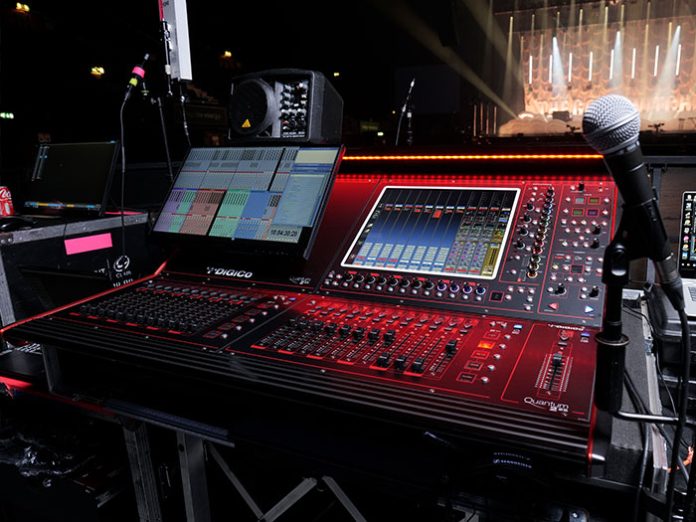FOH Engineer, Nathan Kennedy and Monitor Engineer, Michael ‘Fitz’ Fitzsimons utilised a DiGiCo SD10 and DiGiCo Quantum 225, supplied by Clair Global, to mix Maisie Peter’s The Good Witch Tour.
Kennedy started using DiGiCo consoles in 2012, and says the workflow immediately resonated with him. “What goes in, comes out exactly as you’ve filtered it”, he said. “DiGiCo is always my first-choice console, and I truly appreciate their natural and uncoloured sound. During Maisie’s first year, I used an SD10. For the US and UK tour, I switched to the Quantum 225 as I wanted to explore the Spice Rack and Mustard Processing. The Chilli 6 significantly enhances Maisie’s vocals and does precisely what it’s designed for. I apply Mustard compression to my drum groups, which makes the toms, kick, and snare pop a lot more than they did.”
Fitzsimons noted that he has toured with most extensively with SD7 and SD10 consoles, and continues with an SD10 for Maisie’s tour. “DiGiCo’s Macros and Snapshots are so customisable, no other manufacturer comes close,” he explained. “Monitoring Maisie demands a lot of manual adjustments and rides. Being able to programme the rest of my changes accurately, and knowing they’ll happen seamlessly with the timecode, makes executing the other parts easy, allowing me to focus my attention on them. DiGiCo’s flexible I/O made it the obvious choice for this project. I’m sharing mic inputs on a fibre loop with Nathan, which also includes an Orange Box facilitating bi-directional Dante communication between monitors and playback, alongside various sends and receives. It’s an incredibly organised way to tour and requires a minimal amount of interconnects or splits.”
Fitzsimons employed eight Stereo Auxes into his in ear rack, along with spare, guest, and control mixes. He incorporated subs, a butt kicker, and analogue returns to a hardwired drum pack. “The cue and crew mixes leave the board on matrixes. I merge these mixes into stereo groups before the matrix grid and use a shout group as a key input on the duckers to ensure crystal-clear talkback during the show,” he noted.
Additionally, he utilised 10 internal effects, some on Aux sends and others as channel inserts. “For instance, with acoustic guitars, I adjust the wet/dry mix per Snapshot/song,” he added. “I split all my drum channels, then sub-mix the split channels into a buss feeding a stereo group, on which I use a pair of analogue UREI 1176’s. Talk about flexibility.”
For FOH, there were 60 inputs in total, which included talkbacks. Kennedy also uses six mono Auxes, one stereo Aux, six mono groups and five stereo groups. “I have a dedicated Maisie vocal EQ group, kick and snare group, toms group, backing vocals group and guitars group.”
Kennedy has found the Chilli 6 on the Quantum 225 useful as it helps him to “punch the vocal through more. I have found the Mustard compression really changes the sound of the group or instrument it’s in, and I can really play around with the sound,” he shared.
“I find DiGiCo to be very reliable. This is why they are my number one choice. For nine months of this year, I have been using DiGiCo consoles, and they haven’t let me down once!”
“Over this time, I’ve been to Chessington to programme files and work with multitrack, and Clair Global have also given me space in one of their offices at Twickenham to work on an SD7 session – they even did this during Covid. So to say that Claire Global and DiGiCo go above and beyond to help their customers is an understatement. We also had a really great time in the DiGiCo room at Montreux Jazz Festival this year with Product Specialist Dave Bigg and Austin, DiGiCo’s MD, who showed us the new Quantum 338 and KLANG immersive in ear monitoring systems so enthusiastically,” Fitzsimons concluded.






